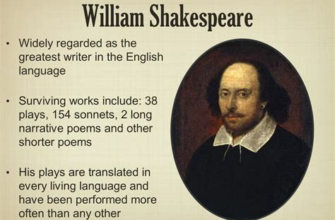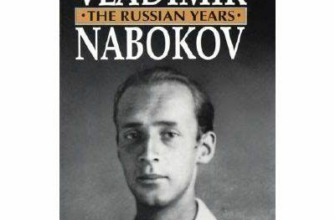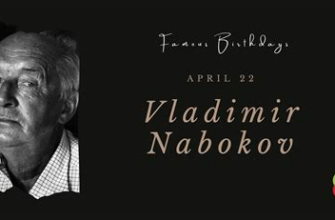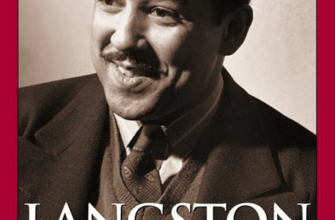Embark on a captivating exploration into the intricate tapestry of one of history's most enigmatic and visionary figures. Delve into the extraordinary journey that shaped the artistic brilliance of the indomitable Gertrude Stein, whose name reverberates through time as a stalwart icon of modernist literature and avant-garde art.
Witness the profound metamorphosis of an extraordinary mind as it navigates through the hallowed halls of intellectual circles, challenging conventions and defying societal norms with tenacity and audacity. Stein's enigmatic persona remains shrouded in an air of intrigue, as her unconventional perspective and uncompromising spirit revolutionized the very essence of artistic expression.
Immerse yourself in the vivid kaleidoscope of Stein's artistic journey, where words metamorphose into lyrical paintings and prose evolves into a symphony of abstract thought. Her unparalleled genius, characterized by a playfulness with language and a profound exploration of the human experience, leaves an indelible mark on the annals of literary history.
Discover the untold stories behind Stein's magnetic presence within the vibrant expatriate community of Paris, where she cultivated relationships with luminaries such as Pablo Picasso, Ernest Hemingway, and F. Scott Fitzgerald. As a muse and muse-maker, Stein's salon became a mecca for avant-garde artists, sparking a creative revolution that resonated far beyond the confines of her bohemian enclave.
The Early Years: Gertrude Stein's Childhood and Education

Exploring the formative years that shaped Gertrude Stein's remarkable journey as a renowned artist, this section delves into her childhood and the educational experiences that molded her unique perspective.
- Early Childhood:
- Gertrude Stein, born in [birthplace], spent her early years in a nurturing environment filled with artistic influences.
- Education:
- Believing in the power of education, Stein's parents ensured she received a comprehensive schooling that encouraged intellectual curiosity and critical thinking.
- Inquisitive Nature:
- From an early age, Stein displayed an insatiable curiosity about the world around her, eagerly exploring various subjects that captured her imagination.
- Artistic Inspirations:
- Surrounded by a vibrant cultural scene, Stein's upbringing exposed her to diverse art forms, influencing her aesthetic sensibilities and shaping her future artistic endeavors.
- Literary Pursuits:
- Stein's love for literature blossomed during her youth, where she cultivated a deep appreciation for language and embraced storytelling as a powerful means of expression.
- Early Experiences:
- Through early experiences and encounters, Stein began to develop her unique voice, laying the foundation for her future contributions to the world of art and literature.
Finding Her Voice: Gertrude Stein's Early Writing and Literary Influences
In this section, we will delve into the formative years of Gertrude Stein, exploring the origins of her distinctive voice and examining the literary influences that shaped her early writing. Through exploration of her early works, we will gain insight into the development of Stein's unique artistic style and the impact it had on the world of literature.
- Stein's Childhood Environment
- Educational Influences
- Literary Inspirations
- The Influence of Visual Art
- Experimentation with Language
- Stein's Circle of Intellectuals
In understanding the early writings of Gertrude Stein, it is essential to examine the environment in which she grew up. By considering the influences of her childhood, we gain a deeper understanding of the unique perspective she brought to her literary works.
Furthermore, we will explore the educational environment that played a significant role in shaping Stein's writing style. From her time at Radcliffe College to her studies in Europe, we will uncover the intellectual foundation that laid the groundwork for her future literary achievements.
In addition to her formal education, Stein's early writings were heavily influenced by various literary movements and genres. By examining these influences, which ranged from modernism to romanticism, we can grasp the evolution of Stein's own artistic voice.
Notably, Stein's fascination with visual art also greatly impacted her writing style. We will explore the ways in which painters such as Pablo Picasso and Henri Matisse influenced Stein's innovative approach to language and form.
Experimentation with language was a hallmark of Stein's early works. Through the use of repetition, fragmentation, and wordplay, she challenged traditional literary conventions and pushed the boundaries of what was considered acceptable in the literary world at the time.
Finally, we will examine the community of intellectuals and artists with whom Stein surrounded herself. Through her collaborations and interactions with figures such as Ernest Hemingway, F. Scott Fitzgerald, and Ezra Pound, Stein's early writing was further shaped and influenced by the vibrant creative culture of the time.
A Transatlantic Journey: Gertrude Stein's Time in Paris

Discover the captivating tale of Gertrude Stein's experience living in the enchanting city of Paris. Delve into the story of her transatlantic move, as she embarked on a new chapter of her life in the vibrant capital of France.
In the early 20th century, Gertrude Stein made the bold decision to leave behind her familiar homeland and embark on a journey across the Atlantic Ocean. In search of artistic inspiration and intellectual stimulation, she found herself drawn to the cosmopolitan allure of Paris. This move marked a significant turning point in her life, shaping her artistic vision and establishing her as a central figure in the modernist art movement.
| Glimpse into the artistic circles of the time | Immerse yourself in the bohemian atmosphere of Paris |
| Encounter iconic figures such as Picasso and Hemingway | Explore the Montparnasse district |
| Witness the birth of Cubism and the Lost Generation | Visit famous literary salons and avant-garde exhibitions |
Living in the heart of the artistic and literary hub, Gertrude Stein became a central figure in the Parisian avant-garde scene. Through her famed salon gatherings, she fostered creative dialogues and forged meaningful connections with fellow writers, artists, and intellectuals. These interactions not only influenced her own artistic practice but also contributed to the development of an artistic movement that would redefine the boundaries of creativity.
Gertrude Stein's time in Paris was marked by artistic growth and experimentation. Her style of writing, characterized by repetitive phrases and exploring unconventional syntax, challenged traditional literary norms and offered a fresh perspective on language and narrative. Through her unique artistic voice, she left an indelible mark on the literary landscape of the era.
As you delve deeper into Gertrude Stein's transatlantic journey and her time in Paris, you will uncover the transformative impact of her surroundings on her artistry. Prepare to be captivated by the rich cultural tapestry of the city that propelled Gertrude Stein towards greatness and forever shaped her artistic legacy.
Salon Life: Gertrude Stein and the Circle of Avant-Garde Artists
In the realm of artistic expression, there exists a vibrant community of forward-thinking individuals who challenge conventional norms and push the boundaries of creativity. Gertrude Stein, a remarkably influential figure in the avant-garde movement, found herself at the epicenter of this cultural revolution. Through her renowned salons, Stein cultivated an environment where artists from various disciplines gathered to exchange ideas, challenge traditional art forms, and contribute to the emergence of a new artistic era.
Stein's salons were a hotbed of creative energy, serving as a breeding ground for experimentation and the birthplace of new artistic movements. Painters, writers, poets, and musicians flocked to these gatherings, seeking intellectual stimulation and inspiration. Steeped in a spirit of collaboration and innovation, these salons brought together a diverse group of individuals who shared a belief in the power of art to revolutionize society.
- The Circle of Avant-Garde Artists
Within Stein's circle of avant-garde artists, a range of talents and perspectives converged. From the likes of Pablo Picasso, Henri Matisse, and Marc Chagall to literary icons such as Ernest Hemingway and F. Scott Fitzgerald, the salon attracted some of the most influential creators of the time. These individuals, driven by their shared desire to challenge the status quo, engaged in impassioned discussions that fueled their artistic endeavors.
At the heart of these salons was Stein herself, a central figure who cultivated an atmosphere of intellectual curiosity and artistic exploration. Her keen insights and unique approach to language and literature attracted like-minded individuals, establishing her as the ultimate purveyor of the avant-garde movement. Through her salon gatherings, Stein provided a platform for artists to showcase their work, exchange ideas, and collaborate on projects, thereby fostering a creative synergy that resonated throughout the artistic community.
- The Legacy of Stein's Salons
The impact of Stein's salons cannot be overstated. They not only nurtured the growth of revolutionary art movements but also became a catalyst for wider societal change. Through her influence, Stein challenged prevailing notions of gender, sexuality, and artistic expression, paving the way for future generations of artists to explore their own unique visions.
The legacy of Gertrude Stein and her vibrant salon gatherings lives on, inspiring artists and intellectuals to continue pushing the boundaries of artistic expression. In the realm of avant-garde art, Stein remains a guiding light, reminding us of the powerful role that collaboration, dialogue, and a fearless pursuit of innovation can play in shaping the course of artistic history.
The Birth of Modernism: Gertrude Stein's Influence on Literature and Art

In the realm of literary and artistic expression, Gertrude Stein emerged as a transformative force, wielding her unique perspective and creative genius to shape the course of modernism. Her impact extended far beyond the boundaries of traditional artistic conventions, as she fearlessly challenged societal norms and reimagined the very essence of language and form. Through her groundbreaking works, Stein revolutionized the way we perceive and engage with literature and art, leaving an indelible mark on the cultural landscape.
Stein's sheer audacity and relentless pursuit of innovation propelled her to the forefront of the modernist movement. With her unconventional writing style and experimental use of language, she shattered the confines of traditional storytelling, transcending the limitations imposed by structured narratives. Her prose, characterized by repetition, fragmentation, and ambiguity, defied traditional grammatical conventions, creating a new mode of expression that embraced subjectivity and sought to capture the essence of human consciousness.
In addition to her literary contributions, Stein's impact extended to the world of visual arts, where she served as a catalyst for the emergence of abstract expressionism. Her salon in Paris became a vibrant hub for artists, writers, and thinkers, fostering a creative environment where ideas could flourish freely. Through her patronage and support, Stein facilitated collaborations and dialogues that pushed the boundaries of artistic expression, paving the way for new artistic movements that redefined the very concept of art itself.
Stein's profound influence on literature and art continues to reverberate to this day, as her radical approach to creativity and her tireless pursuit of originality serve as an enduring source of inspiration for artists and writers all around the world. Her relentless spirit of experimentation and refusal to conform to established norms continues to challenge and inspire future generations, reminding us of the transformative power of artistic innovation and the boundless possibilities that lie within the realms of literature and art.
Stein and Picasso: An Unparalleled Collaboration of Creativity
Join us on an extraordinary exploration of the unique artistic synergy that blossomed between Gertrude Stein and Pablo Picasso. This exceptional partnership transcended boundaries and redefined the realms of literature and visual art, leaving an indelible mark on the cultural landscape.
Gertrude Stein, an immensely talented writer and patron of the arts, found a kindred spirit in Pablo Picasso, the revolutionary Spanish painter and sculptor. Their collaboration proved to be unlike anything seen before, as they challenged conventions and ventured into uncharted creative territories.
Together, they embarked on a mesmerizing journey, blurring the lines between words and images. Stein's innovative literary style, characterized by repetition and rhythm, found its visual counterpart in Picasso's cubist masterpieces. Through their shared exploration of form and narrative, they revolutionized the understanding of both prose and painting.
Their mutual influence and inspiration were evident in Stein's groundbreaking portraits of Picasso, capturing his essence through words woven together like strokes of a brush. Simultaneously, Picasso's distinctive visual language found resonance in Stein's experimental prose, creating a rich tapestry of artistic expression.
This creative partnership was a constant dialogue, a symbiotic exchange of ideas and visions. Stein and Picasso pushed each other's boundaries, challenging the established norms of their respective mediums. Their alliance was a testament to the power of collaboration, unlocking new realms of artistic exploration.
Join us as we delve into the captivating world of Stein and Picasso's creative synergy, unearthing the profound impact they had on modern art and literature. Witness the birth of artistic innovation, united by a shared passion for pushing the boundaries of creativity beyond anything that came before.
War Years: Gertrude Stein's Role as a Cultural Icon and Activist
Defining Moments Amidst Conflict: Explore Gertrude Stein's significant contributions during the tumultuous wartime period, as she emerged as both a revered cultural figure and a dedicated activist. Despite the chaos and uncertainty, Stein's unwavering commitment to her art and advocacy shone through, solidifying her reputation as a prominent voice of her era.
A Cultural Beacon in Dark Times: In the midst of the war, Gertrude Stein's role as a cultural icon became increasingly pivotal. Through her innovative literary works and influential artistic circle, she provided solace and inspiration, bridging the gap between tradition and modernity. Her intellectual prowess and unique perspective challenged societal norms, igniting intellectual and artistic revolutions in the face of adversity.
Activism and Resistance: Beyond her artistic endeavors, Gertrude Stein actively engaged in activism during the war. By aligning herself with progressive movements and advocating for social change, she exemplified the immense power of art as a catalyst for transforming society. Stein's boldness and fearlessness in raising her voice against injustice established her as a renowned activist whose impact was felt far beyond the realm of art.
An Influential Circle: Gertrude Stein's role as a cultural icon and activist was further amplified by her association with other influential figures of her time. From Pablo Picasso to Ernest Hemingway, Stein's network of artists and intellectuals facilitated collaboration and exchange of ideas, creating a space for cultural revitalization amidst the chaos of war. Together, they challenged conventions and reshaped the artistic landscape, leaving an indelible mark on history.
Legacy and Impact: Gertrude Stein's unwavering dedication to her art and activism during the war years not only solidified her position as a cultural icon but also left a lasting impact on future generations. Her fearless pursuit of truth, artistic experimentation, and social justice paved the way for future artists and activists, inspiring them to challenge the status quo and use their creativity for the greater good.
Exploring Gertrude Stein's Groundbreaking Writing Style
Within the intricate realm of literary expression, Gertrude Stein revolutionized the conventional norms with her innovative approach to prose. Her unparalleled writing style captivated readers and challenged the established paradigms of the written word.
Stein's prose embraced a distinct form of expression, characterized by rhythmic patterns, repetitive phrases, and the omission of traditional punctuation. This unconventional technique aimed to capture the essence of human thought and perception, immersing readers in a world of continuous consciousness.
Unlike the linear narratives prevalent during her time, Stein's writing style often emphasized the power of repetition, utilizing recurrent words and phrases to create a mesmerizing rhythm. Through this technique, she sought to redefine the boundaries of language, creating a new cadence that resonated deeply with her audience.
Furthermore, Stein's deliberate omission of punctuation challenged the inherent structure of written communication. By removing conventional markers such as periods and commas, she aimed to dismantle the traditional constraints placed upon language. This deliberate disruption allowed for a more fluid and organic reading experience, inviting readers to engage with the text in an unconventional manner.
Stein's unique approach to prose also extended to her exploration of syntax and grammar. She ventured into uncharted territories, experimenting with sentence construction and word order. These linguistic innovations added another layer of complexity to her work, stimulating readers to question the fundamental rules of language and discover new possibilities within the realm of expression.
In conclusion, Gertrude Stein's writing style stands as a testament to her unwavering commitment to artistic experimentation. Her groundbreaking approach challenged the conventions of language and provided a platform for boundless creative exploration. Through her innovative use of rhythm, repetition, and unconventional syntax, Stein forever altered the way we perceive and engage with the written word.
Legacy and Influence: Gertrude Stein's Enduring Impact on Literature and Art

Gertrude Stein's contributions to literature and art have left an indelible mark that continues to resonate to this day. Her immense talent and unique perspective have shaped the course of modern literature and art, inspiring countless artists and writers across generations.
Stein's revolutionary approach to language and storytelling challenged traditional literary conventions, pushing boundaries and paving the way for experimental writing styles. Through her innovative use of repetition, wordplay, and unconventional syntax, she created a new language that defied conventional understanding. Her experiments with form and structure sought to capture the essence of existence and perception, challenging readers to question established norms.
Furthermore, Stein's support and promotion of avant-garde artists and writers through her famous Paris salon, which became a hub for creative minds, played a pivotal role in shaping the development of modern art. She championed the works of celebrated artists such as Pablo Picasso and Henri Matisse, recognizing their genius and contributing to their rise to prominence.
Stein's influence extends beyond her own literary and artistic output. Her philosophies and ideas continue to inspire contemporary writers and artists who seek to break free from traditional constraints and explore new realms of creativity. Her bold experimentation with form, her celebration of individualistic expression, and her rejection of established norms continue to resonate with those who strive to forge their own artistic paths.
In conclusion, Gertrude Stein's lasting impact on literature and art can be seen in the numerous artists and writers who have been inspired by her innovative spirit. Her legacy lies not only in her own remarkable body of work but also in the ways in which she encouraged and nurtured the talents of others. Stein's influence will continue to shape the artistic landscape for years to come, leaving an enduring legacy of creativity and artistic freedom.
FAQ
What are the major highlights of Gertrude Stein's life?
Gertrude Stein's life was filled with many significant moments. She was born in 1874 in Pennsylvania, but spent most of her life in France. One of the major highlights of her life was her role as a leading figure in the Parisian art scene during the early 20th century. She was also known for her personal relationships with notable artists and writers, such as Pablo Picasso and Ernest Hemingway. Additionally, Stein's work as a pioneering writer and poet made a significant impact on modern literature.
Can you tell me more about Gertrude Stein's artistic style?
Gertrude Stein was known for her experimental and avant-garde artistic style. One of her most notable contributions was her innovative writing technique, which was often characterized by repetition, wordplay, and stream-of-consciousness narrative. Stein believed in the power of language as an artistic medium, pushing the boundaries of traditional literature. She also experimented with visual art, creating abstract portraits and collages. Stein's artistic style was truly unique and had a profound influence on the modern art world.
What impact did Gertrude Stein have on the Parisian art scene?
Gertrude Stein played a crucial role in shaping the Parisian art scene during the early 20th century. Along with her brother Leo, she opened her famous salon, which became a meeting place for artists, writers, and intellectuals. Stein's salon was a hub of artistic activity and creativity, attracting individuals such as Pablo Picasso, Henri Matisse, and F. Scott Fitzgerald. Through her support and promotion of these artists, Stein helped to establish Paris as a center for modern art and literature.
How did Gertrude Stein's personal relationships contribute to her artistic career?
Gertrude Stein's personal relationships played a significant role in her artistic career. Her partnership with Alice B. Toklas, which lasted for over 40 years, provided emotional and creative support. Toklas acted as Stein's muse and assistant, helping her with various projects and providing critical feedback. Furthermore, Stein's friendships with prominent artists and writers such as Pablo Picasso and Ernest Hemingway influenced and inspired her work. These relationships allowed for artistic collaboration, exchange of ideas, and exposure to new perspectives.
What was the legacy of Gertrude Stein's life and artistry?
Gertrude Stein's legacy is significant and far-reaching. She is remembered as a pioneering writer and poet who challenged traditional literary conventions. Her experimental writing techniques influenced generations of writers and helped shape the course of modern literature. Stein's role in the Parisian art scene and her support of fellow artists also contributed to her lasting impact. Today, she is recognized as one of the most important and influential figures of the early 20th century arts movement.



